We need your consent to use the individual data so that you can see information about your interests, among other things. Click "OK" to give your consent.
ASTM D3923-08(2014)
Standard Practices for Detecting Leaks in Reverse Osmosis and Nanofiltration Devices
STANDARD published on 1.1.2014
The information about the standard:
Designation standards: ASTM D3923-08(2014)
Note: WITHDRAWN
Publication date standards: 1.1.2014
SKU: NS-25352
The number of pages: 3
Approximate weight : 9 g (0.02 lbs)
Country: American technical standard
Category: Technical standards ASTM
The category - similar standards:
Annotation of standard text ASTM D3923-08(2014) :
Keywords:
dye test, leaks, nanofiltration, O-ring test, reverse osmosis, tubesheet leak test, vacuum test, ICS Number Code 71.120.99 (Other equipment for the chemical industry)
Additional information
| Significance and Use | ||||||||||||||
|
5.1 These practices may be used to determine whether a RO or NF device is free of leaks if the mechanical integrity of the device is to be confirmed. They may also be used to detect leaks in RO or NF devices whose operating performance indicates a possible leak. These practices may be used for either new or used devices. |
||||||||||||||
| 1. Scope | ||||||||||||||
|
1.1 These practices cover detecting leaks in which there is a direct communication between the feed or concentrate, or both, and the permeate. Several types of leaks are possible with the various configurations of reverse-osmosis (RO) and nanofiltration (NF) devices. 1.2 Types of Leaks: 1.2.1 With hollow-fiber devices, feed or concentrate leakage, or both, into the permeate stream by leaks through the tube sheet and past the tube sheet O-ring are possible. “Leaks” caused by broken fibers are not covered by these practices. 1.2.2 With spiral-wound devices, leaks may occur through damage of the membrane surface itself by punctures or scratches, by glue-line failure, and by O-ring leaks on product tube interconnectors. 1.2.3 With tubular devices, leaks due to membrane damage, tube end seal leaks, and leaks from broken tubes or product headers are possible. 1.3 Three leak test practices are given as follows:
1.4 This standard does not purport to address all of the safety concerns, if any, associated with its use. It is the responsibility of the user of this standard to establish appropriate safety and health practices and determine the applicability of regulatory limitations prior to use. |
||||||||||||||
| 2. Referenced Documents | ||||||||||||||
|
Similar standards:
Historical
1.1.2014
Historical
1.5.2010
Historical
1.5.2010
Historical
1.5.2010
We recommend:
Technical standards updating
Do you want to make sure you use only the valid technical standards?
We can offer you a solution which will provide you a monthly overview concerning the updating of standards which you use.
Would you like to know more? Look at this page.


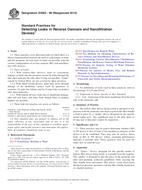
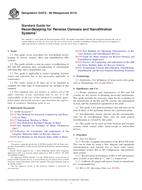 ASTM D4472-08(2014)..
ASTM D4472-08(2014)..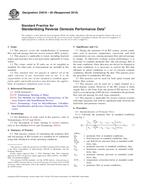 ASTM D4516-00(2010)..
ASTM D4516-00(2010)..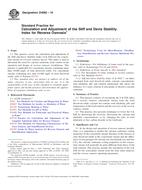 ASTM D4582-10
ASTM D4582-10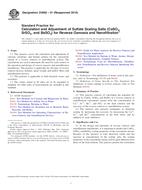 ASTM D4692-01(2010)..
ASTM D4692-01(2010)..
 Cookies
Cookies
